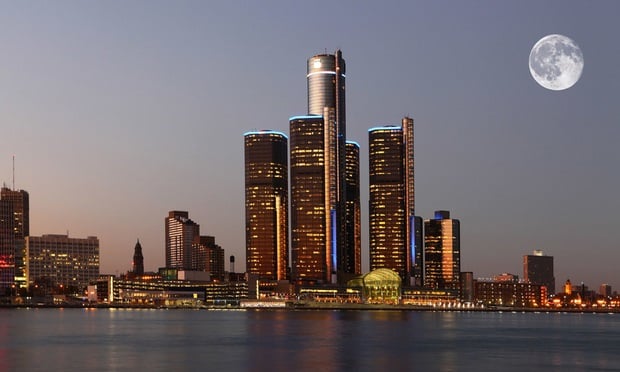The Downtown does lack high-class hotel rooms, but the three temporary casinos have promised to bring in 400 hotel rooms each with the expansion to permanent facilities.
Plans for the new hotels have been announced. However, the plans have been long in finishing, and the city is locked into negotiations with the casinos over a final deal for the permanent sites. A deadline for the deal has been extended until July 31.
Jay Juergensen, a Detroit-based expert on urban development, says a solution is very simple. There are three historic hotels in the Downtown area--the Book Cadillac, Fort-Shelby and the Statler--that could use the renovation.
Juergensen tells GlobeSt.com the permanent casinos should instead refurbish and create rooms in the hotels.
"To me it's pretty obvious," Juergensen says. "The city already owns two of the three hotels."
He says he has inside knowledge that the Fort-Shelby has being shopped for a low priced.
Juergensen points out the casinos have adaptively reused older structures. Greektown Casino was built around the Trapper's Alley complex in Greektown, and MotorCity Casino was built in the former Wonder Bread facility, both in downtown Detroit.
The MotorCity Casino has said it wants to expand at its present site at the Lodge Freeway and Grand River Avenue, on 23 acres of adjacent land. The casino will build a 16-floor hotel with the required 400 rooms, an 800-seat showroom, new restaurants and lounges, a 50,000-sf convention center area, a spa and fitness center along with additional retail outlet space.
Greektown has also mapped out a 40-story, 400-room hotel at its site near the I-375 service drive.
However, Detroit's Downtown needs the investment on its west side to survive, Juergensen says.
Redevelopment is the answer to the rebirth of Detroit, Juergensen says. Tearing down historic buildings is not the answer, he adds.
"If we hollow out the Downtown, it will be a huge lost opportunity. We need to keep these buildings around, to stay a walk-able downtown," Juergensen says.
The main thing to rebuild the area is to have a consistent plan that would transcend political terms, he adds.
"That's the problem with a lot of deals that fell apart after the casino plan to build $2 billion in property along the river failed because of a hold-up of land assemblage," he says. "Once that plan failed and the city decided to change direction, other developments pulled their projects as well."
Properties must be attractive, and include more than just office facilities, he adds.
"People don't want to be disconnected. Every plan should be mixed-use," Juergensen says.
© 2025 ALM Global, LLC, All Rights Reserved. Request academic re-use from www.copyright.com. All other uses, submit a request to [email protected]. For more information visit Asset & Logo Licensing.







